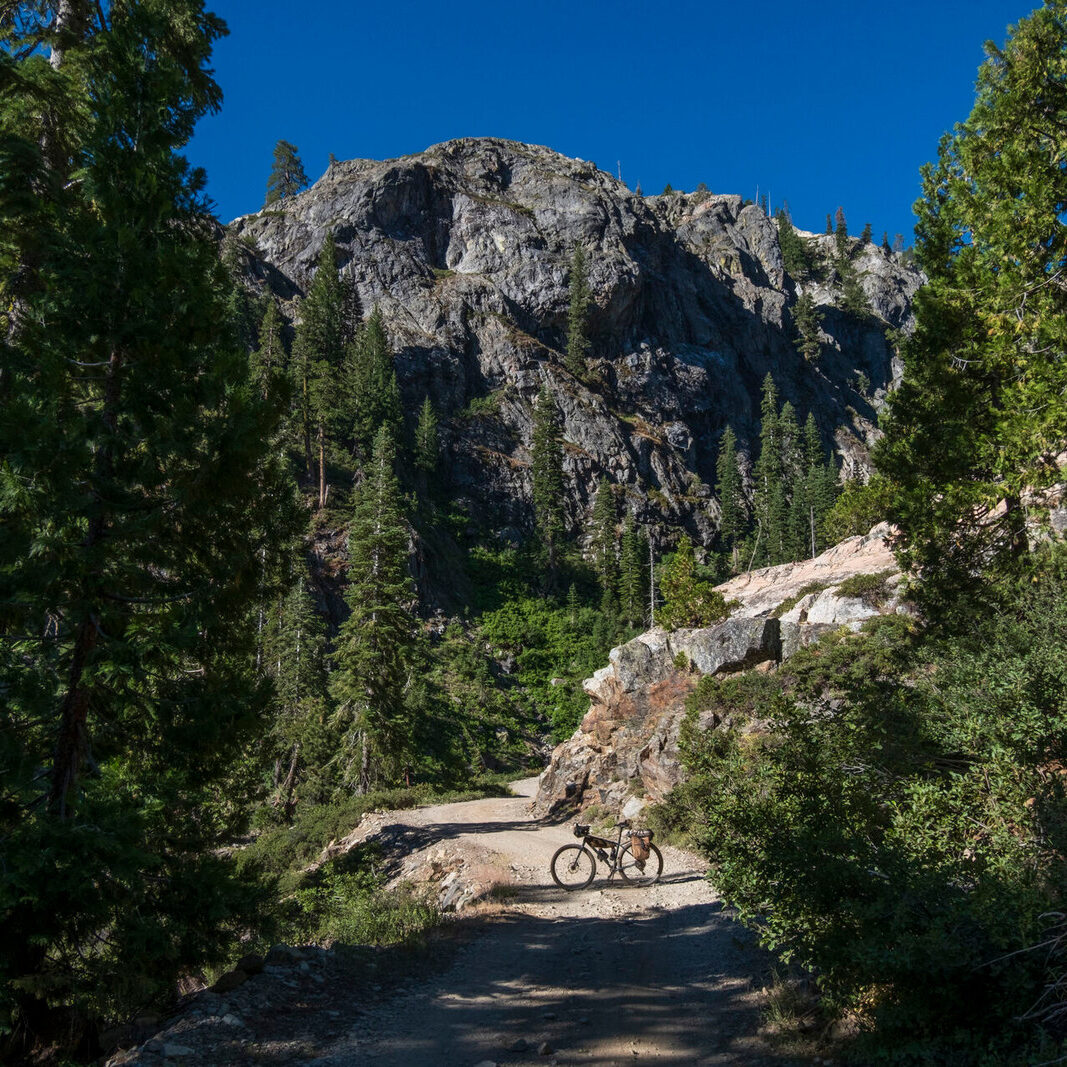Route Overview
Region
Miles
Days Out
Recommended Tire Size
Season
to April
Elevation Gain
Difficulty
6/10 Technical
Primary Surface(s)
rough gravel & 4x4 roads
Route Map
Route Details
The Monumental Loop takes in all that Organ Mountain Desert Peaks National Monument has to offer and links it together with dirt roads through the Rio Grande Valley. Small towns full of spicy food break up the solitude of the desert.
The Monumental Loop was designed to give riders a way to experience Organ Mountains-Desert Peaks National Monument by bike or foot. OM-DP is comprised of six mountain ranges, volcanic craters, narrow canyons, lava flows and numerous archeological and historical sites. Unlike other monuments, OM-DP is spread across Doña Ana County in four far flung units with Las Cruces, New Mexico at the center. The Monumental Loop ties these units together using dirt roads through the Rio Grande valley.
The Loop is laid out in a figure eight design to ensure riders have access to supplies for the long dry desert sections. Effectively this means the Monumental Loop is two loops which both start and end in Las Cruces. Those short on time can easily cut the route in half and complete only one of the two loops.
Green Chile Loop (North): Generally this is considered the more difficult of the two loops. A mellow start from downtown delivers riders to the most popular singletrack trails in the region. Smooth, flowy trails through the smallest unit of the monument, the Doña Ana Mountains make a good introduction to desert biking. Following a brief section along the Rio Grande, the route enters the rugged Sierra de Las Uvas and traverses a series of canyons before dropping riders back on the rio near the village of Hatch and it’s world famous chiles. A wide shoulder on highway 26 is the only way out of Hatch, but after only eight miles of pavement the route turns back into the Las Uvas for the climb up to White Gap Pass. Crossing over the pass the route settles into some smoother riding along the old Butterfield Stage Route before ending in downtown Mesilla.
Red Chile Loop (South): The south loop is slightly longer but overall much easier, especially for riders new to desert conditions. Singletrack leads from town up towards the dramatic spires of the Organ Mountains and eventually connects with the 30-mile long Sierra Vista Trail. Sierra Vista is National Recreation Trail the connects to more singletrack in Franklin Mountains State Park near El Paso, TX. About halfway to Texas the SVT hits a large sand dune so the Loop bails west toward the Rio Grande and the final unit of the monument. Climbing up towards the Potrillo Mountains on roads that are finally smooth is the break most folks need at this point. The final seventy-five miles are wide open and flat. Far from boring though, this portion of the route includes the volcanic landscapes of Killbourne Hole and Aden Lava Flow.
Route conditions can vary greatly as most of these roads and trails receive little to no maintainence. Deep sand, eroded trails, and rutted roads can pop up anywhere. 2.2 inch tires or wider are advised. Most riders prefer 2.4-2.6″ and many prefer to have some front suspension. Typically the more difficult sections are shorter and interspersed with some more mellow miles.
As with all long distance routes the Monumental Loop can’t hit everything the area has to offer. I highly recommend using the route as a starting point and adding on additional singletrack, scrambling up remote desert peaks, or peering into canyons looking for archeological sites.
- Paved: 20%
- Smooth Gravel: 24%
- Rough Gravel: 24%
- 4×4 Road: 24%
- Singletrack: 8%
Bikepacking is still relatively new to Las Cruces and Organ Mountains-Desert Peaks so its critical that all riders and strictly following LNT principles and being good stewards. We’ve made a lot of progress building relationships and a reputation with other public land users, ranchers, and land managers and we hope to keep that going.
Recommended parking for the Loop is at Sisbarro Park. The large dirt lot north of the park has proven to be safe. Many out of state visitors travel through the El Paso airport. The most adventurous riders can make their way from the airport to the route via Franklin Mountains State Park but shuttles to Las Cruces are also available.
Camping is generally available on the bulk of the route excluding the portions along the Rio Grande. Please avoid camping near ranching infrastructure. Resupply is readily available for most of the route. The southwest section has the longest stretch without resupply at 75 miles.
Water is scarce along the route. During the riding season there is virtually no surface water available. There are cattle tanks, those on the map are the most reliable, but the BLM has instructed me to inform folks that those are for emergency use only. Not having water in the desert is an emergency. Be courteous when accessing water from cattle tanks. Do not damage anything or harrass the cattle. Move on from the area as qucikly as possible.
- Get the route on Ride With GPS.
- Check out the route’s Instagram for events and updates.
- Read the Radavist’s write up of the 2021 Dangerbird.
- Watch Ryan Van Duzer’s video of the route.
- The route is also published on Bikepacking.com if you would like to check out more great photography, resources and commentary from other riders.
- Katrina Hase bikepacked the Monumental Loop with her Son. You can watch the video that she created on YouTube.
Matt Mason created and stewards this route. Additional thanks to the Monumental Loop Stewards of Shred: Pablo Lopez, Angelica Rubio, and Collette Marie.
Here is a little about Matt in his own words:
My route making started early in a small creek in Iowa. I was asked by my parents not to go in the nearby creek but I knew every bend of the few miles that flowed through my neighborhood. More recently I created, then edited, shaped, and reshaped the Monumental Loop. That project taught me a lot about what riders are looking for in routes. Initially I focused on remoteness, natural beauty, and deprioritized the rider experience. Using rfeedback and years of continuing to use the route myself I shifted to a rider first perspective. The shift, at least on the Monumental Loop, means more spicy resupply options, mellow miles replacing sand pits, yet it still maintains much of the natural beauty. Rollin’ and Tumblin’ benefitted immediately from this new approach. Instead of making routes I’m focused on creating the space and opportunities for riders to have transformative experiences. Ideally folks come away from these routes knowing more about themselves and the region.
Matt has offered to be available to answer questions if you are planning a trip on this route. Please also get in touch with any updates on route conditions that may be relevant to other riders.
Please submit your questions and comments on the route via the contact form below.
- This route traverses the traditional lands of the Piro/Manso/Tiwa, Chiricahua Apache and Mescalero Apache peoples.
- Thanks to Friends of Organ Mountains-Desert Peaks for protecting the area.



































